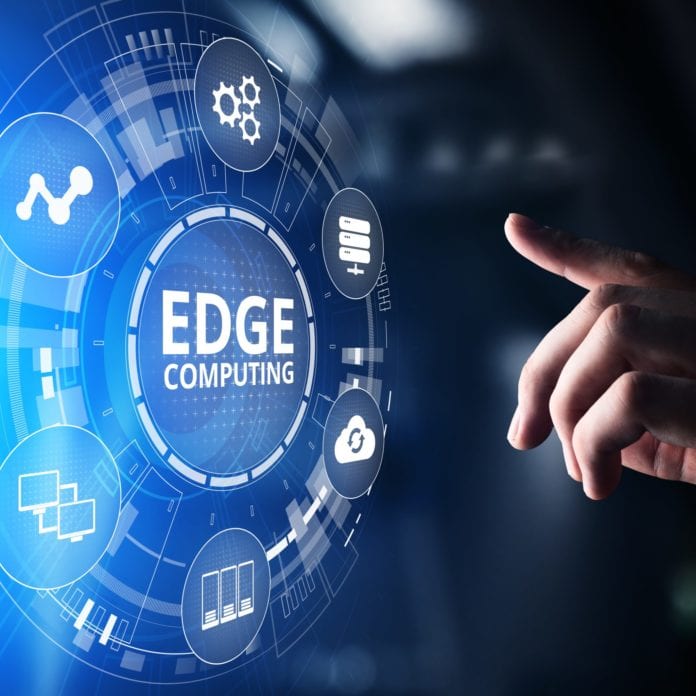5G paired with MEC is already driving enterprise innovation, and the sky is the limit
Mobile Edge Computing (MEC) places compute and storage resources closer to the consumer or enterprise end user. 5G, coupled with a MEC infrastructure, enables a fundamentally new era of low-latency data communications which can enable entire industries. As telecom providers seek to monetize 5G, edge computing will be an important part of that discussion. Let’s take a look at some broad use cases where 5G MEC holds huge promise for businesses and consumers alike.
MEC in autonomous vehicle operation
Whether it’s a fleet of pizza delivery vehicles, driverless couriers, or passenger cars, vehicles produce immense amounts of data. Traveling, road surface and weather conditions can change continuously. Not reacting to changing or delivery route updates isn’t an option – everything related to autonomous vehicle operation requires millisecond accuracy. Moving both network traffic and compute demands from the data center to the network edge enables network operators to support the bandwidth and low latency required for these applications.
This framework still needs to be stitched together before industries can start depending on autonomous vehicle operations, but the test cases show forward progress. Vehicle to Everything (V2X) communications are a crucial piece of this puzzle. In a recently concluded test, Verizon and Nissan used MEC to create ‘a multi-viewpoint picture of potential safety hazards,’ which was relayed to the driver. Nissan used Verizon’s 5G Edge with AWS Wavelength, a capability first launched in Boston and the Bay Area in August 2020, combined with on-vehicle sensor data, to initiate driver notifications on Nissan’s Intelligent Shared World platform.
MEC in healthcare
MEC enables profound changes in healthcare thanks to low latency applications, massive bandwidth, and enabling massive IoT. Applications include remote telepresence for surgeons, both as observers and active participants, using automated instruments – possible thanks to the low latency and massive bandwidth afforded by MEC. MEC dramatically increases the amount and quality of valuable medical data that can be gathered and processed at high speed. It also has practical applications in staff communications, logistics, and other aspects of medicine.
AT&T is using MEC and its 5G+ network at the University of Southern California’s (USC’s) Lawrence J. Ellison Institute for Transformative Medicine to support cancer research, treatment, and wellness education. The school has found uses for MEC including 3D tumor imaging, patient location maps, and better and faster data collection and analysis.
MEC in entertainment
Operator network resiliency is tested whenever large crowds mass, whether it’s protests, public festivals or stadium sporting events. MEC helps. Verizon has partnered with the NHL and NBA to deploy its 5G Ultra Wideband and AWS-powered mobile edge computing (MEC) services at 60 arenas and stadiums. The technology will be used to support in-venue, interactive applications, such as real-time access to video highlights and player tracking data using augmented reality (AR). Verizon’s MEC and AWS also powered a new experience for Super Bowl attendees. Fans were able to experience interactive events using Augmented Reality on Verizon’s 5G Edge with AWS Wavelength service.
Cloud gaming has held tantalizing promise to gamers and the game industry for years. Before MEC, it was largely a failure, hampered by network lag. MEC has enabled a new class of cloud gaming. That effort is spearheaded by hyperscalers. Leveraging their Wide Area Networks (WANs), hyperscalers put MEC resources near gamers to provide a console-like gaming experience.
AWS powers Amazon Luna, while Microsoft Azure is the basis for Microsoft’s Game Pass (née xCloud) gaming service and Sony’s PlayStation Now streaming service. Google has seen more limited success with its Stadia service, hosted on Google Cloud. Nvidia has targeted hyperscaler offerings with its GeForce Now service, hosted using its own powerful data center and graphics technology.
MEC in manufacturing
MEC and Manufacturing 4.0 go hand in hand. It can help businesses improve logistics throughout their operations, reduce waste and inefficiency, reducing manufacturing and assembly line errors, and spearhead a new class of automation not possible at scale before.
Ford is building a private 5G network using AT&T and MEC to build EVs in its new Rouge Electric Vehicle Center in Dearborn, Michigan. According to AT&T, 5G connectivity at the EV center supports wireless connections ranging from tablets and phones used by employees on the production line to over-the-air software updates for the vehicles. AT&T said that the lower latency of 5G network helps automated robotics and machinery have faster reaction times and make better decisions, to help keep workers safe.
MEC in retail
MEC is driving new business opportunities for retailers. Retailers are limited by factors like aging, unreliable, and overburdened in-store WAN and Wi-Fi connections. As more devices demand connectivity, essential businesses services can slow to a crawl.
MEC also offers a way for retailers to rethink customer experience. That’s Verizon Business and Deloitte’s hope with a new 5G and MEC digital platform designed to deliver real-time analytics. The service’s goal is to improve customer engagement, inventory efficiency and associate productivity. The companies said the platform will help retailers with frictionless and cashierless checkout workflows and better store inventory stocking.
Just the beginning
Data drives the cloud economy. MEC helps businesses and enterprise get more actionable data faster. It’s a huge and continuously developing opportunity for network operators and enterprise. These use cases will change as businesses find new ways to use MEC to help get business done in the cloud.
Catherine Sbeglia contributed to this article.

